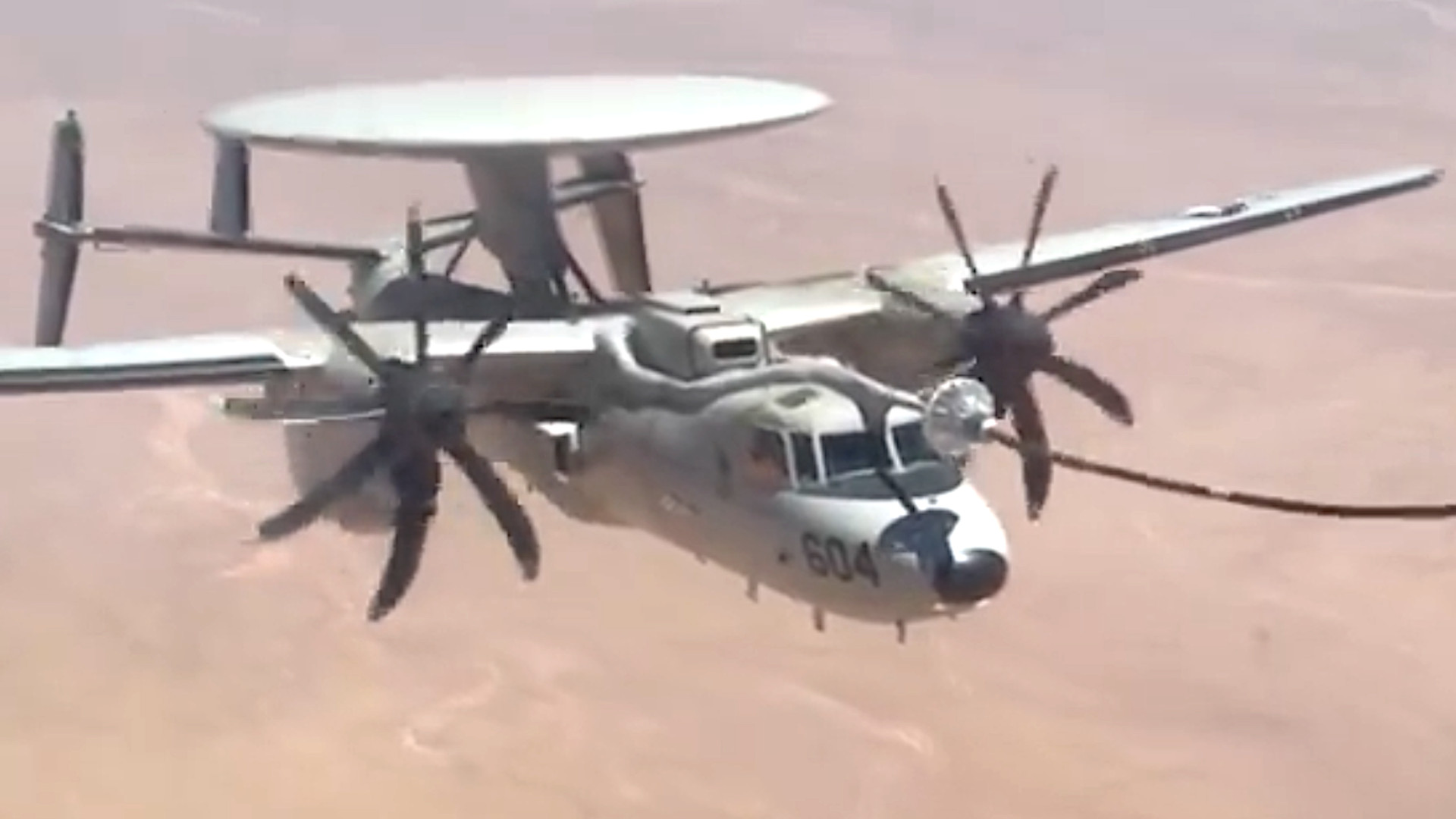A brief video clip of a U.S. Navy E-2D Advanced Hawkeye linking up with an Air Force HC-130J tanker somewhere over in the Middle East calls attention to how this aircraft has become even more of a force multiplier with the added ability to refuel in flight. E-2Ds in the region that can get more gas in the air could play especially important roles in response to expected Iranian attacks on Israel, as well as any larger conflict that might erupt. In-flight refueling capability also opens up new ways to employ these airborne early warning and control planes elsewhere around the world, including in island-hopping scenarios during a high-end fight in the Pacific.
U.S. Central Command released the video, seen below, showing the E-2D refueling over or near land in the Middle East earlier today.
Based on the region and what can be seen of the aircraft, it is likely a Hawkeye from Airborne Command and Control Squadron 115 (VAW-115) that is currently embarked on the Navy’s supercarrier USS Theodore Roosevelt. The Roosevelt was last reported to be sailing somewhere in the Gulf of Oman. The USS Abraham Lincoln and its strike group are currently heading toward the region from the Western Pacific to take its place. The Air Force has regularly operated HC-130s from bases in the Middle East, as well as East Africa, over the years.
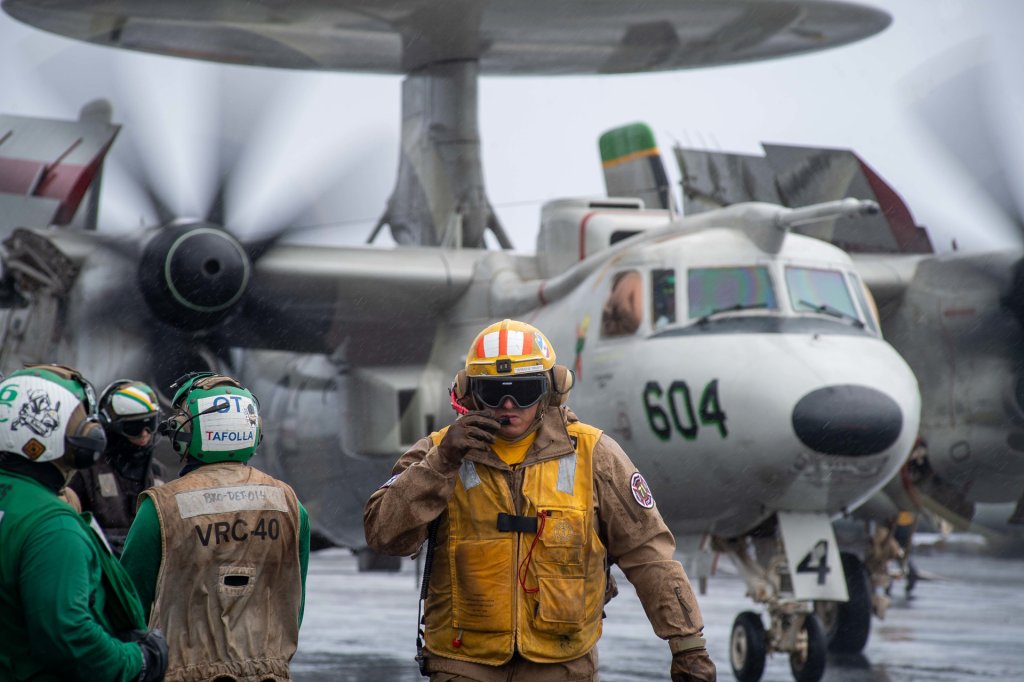
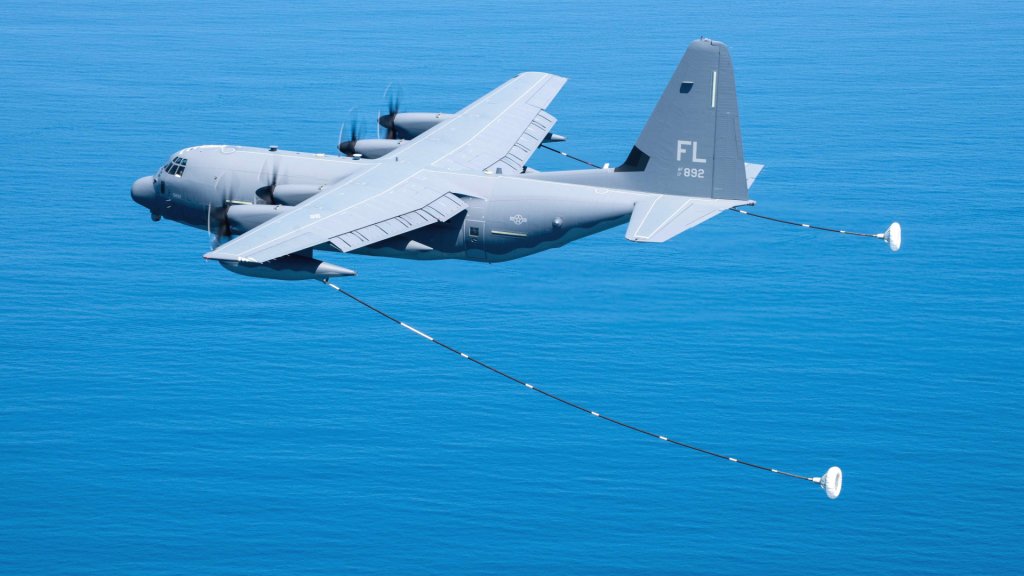
The Navy has been working to refit all of its existing Advhaned Hawkeyes with aerial refueling capability since the late 2010s. All new production E-2Ds for the service, which is ultimately looking to field a fleet of 86 of these aircraft, have the ability to refuel in flight.
In-flight refueling extends the reach of the Navy’s E-2Ds and their ability to stay on station once they arrive in their assigned operating area. Standard E-2Ds typically fly sorties lasting around four hours, with two and a half hours of that time being on station. The Navy has said in the past that aerial refueling will allow for missions lasting up to seven hours in total with five hours on station.
The extra on-station time could be very valuable for E-2D crews helping to coordinate any U.S. response to major attacks on Israel from Iran or its regional proxies. Retaliation against Israel is expected to come over the assassination of Ismail Haniyeh, the top political leader of the Palestinian terrorist group Hamas, in the Iranian capital Tehran nearly a week ago.
A previous round of Iranian retaliatory attacks on Israeli targets in April took place over the course of many hours. Iran also launched hundreds of low-flying cruise missiles and drones in that instance, threats that the Advanced Hawkeyes would be well suited to spotting and tracking thanks to the incredible ‘look-down’ capabilities of their AN/APY-9 radars.
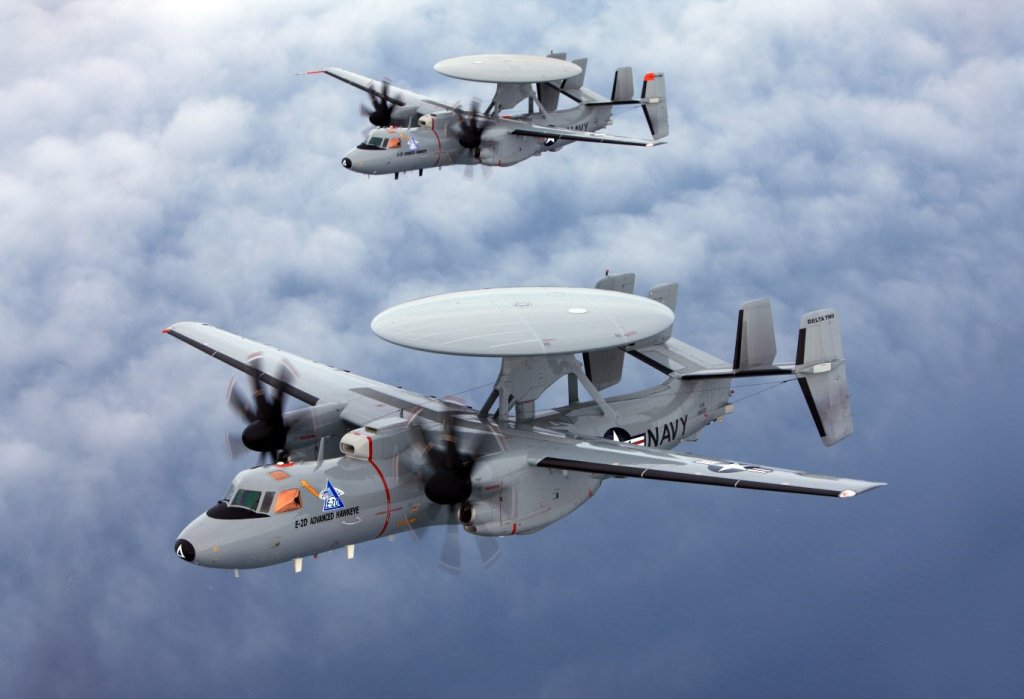
E-2Ds, which also have impressive communications and networking capabilities, could also provide important support to Navy and other friendly forces in the event of a larger confrontation between the United States and Iran or if the U.S. military finds itself called upon to support a subsequent Israeli response in a non-kinetic fashion. Steadily improving ‘kill web’ architectures that the Navy and other branches of the U.S. military are developing and fielding means that the aircraft could support friendly forces down below, as well as in the air, too. For instance, the Navy has now long touted the ability of E-2s to help ships engage aerial threats with SM-6 interceptors beyond the reach of their organic radars and other sensors using the Naval Integrated Fire Control-Counter Air (NIFC-CA) architecture.
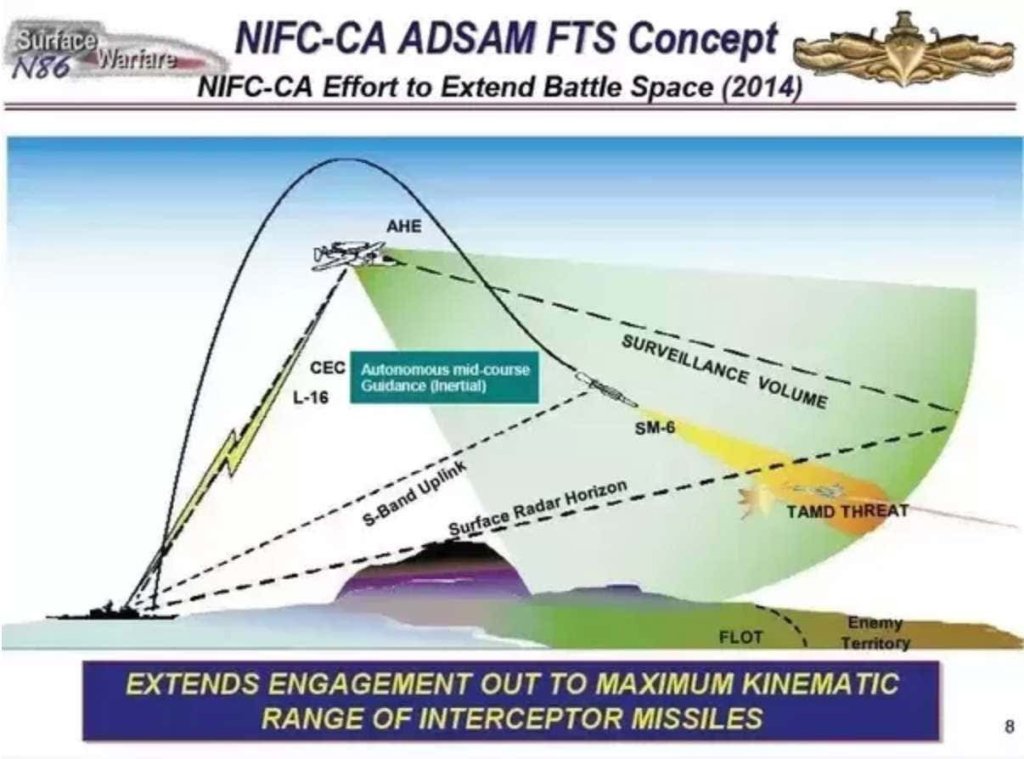
The video from CENTCOM showing an Air Force HC-130 refueling the E-2D highlights how that service can keep the Navy aircraft in the air, even without using larger jet-powered tankers. MC-130 special operations Hercules aircraft could also provide this sustenance to the E-2D, along with U.S. Marine Corps KC-130J tanker-transports. USAF jet powered tankers can refuel the E-2D as well using hose and drogue systems internal to the aircraft, such as on the KC-10 and KC-46, or via a boom adapter (‘Iron Maiden’) found on the KC-135. It isn’t clear if the E-2D is cleared to refuel from the KC-135R’s wingtip refueling pods, but we doubt it is.
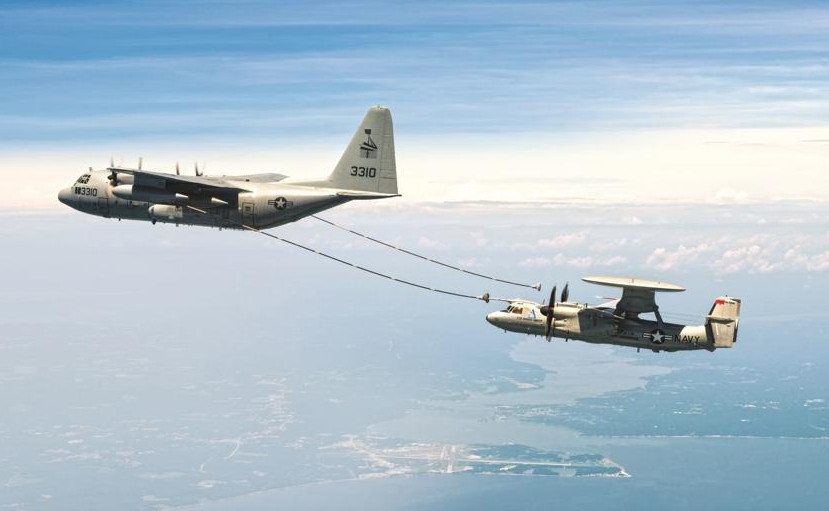
Advanced Hawkeyes can also operate from bases on land that might not be able to accommodate larger early warning and control aircraft like the Air Force’s E-3 Airborne Warning and Control System (AWACS). In-flight refueling capabilities further allows the E-2Ds to launch for any location with less fuel, and therefore lower overall weights, which improves short-field performance, and then immediately link up with a tanker to top up.
There is the potential that some VAW-115 E-2Ds from the Roosevelt are already operating ashore. A squadron’s worth of F/A-18E/F Super Hornets from the carrier have reportedly moved to base on land somewhere in the Middle East to be better positioned to help defend Israel, according to The Wall Street Journal‘s Lara Seligman. Other U.S. military assets, including Air Force F-22 Raptor stealth fighters, are also being deployed to the region.
None of the advantages and new employment opportunities that E-2Ds with in-flight refueling capability offer are limited to the Middle East, either. In fact, the aircraft, which are also in the process of receiving additional upgrades to their communications suites and other systems, could be even more valuable in a future high-end fight in the Pacific. Their mix of capabilities would be particularly well suited to supporting forward-deployed forces operating from distributed locations, such as on islands spread across a broad area. The U.S. Air Force and U.S. Marine Corps are both refining new concepts of operations that focus heavily on expeditionary and distributed operations and rapid deployment to remote and/or austere forward locations with minimal support as part of preparations for a potential high-end conflict, especially one against China.
The ability to operate from shorter runways and with a lower logistic footprint, as well as being able to get gas once in the air from smaller propeller-driven tankers, or even future drones like the MQ-25 Stingray, would be more relevant than ever in the context of an island-hopping campaign. In-flight refueling capable E-2Ds would also then be closer to their operating areas helping to further maximize on-station time.

Even with the Air Force’s planned introduction of the smaller Boeing 737-based E-7A Wedgetail to replace a portion of its aging E-3 AWACS fleet, there really isn’t another airborne early warning and control capability set to be in the U.S. inventory in the coming years that will match the Advanced Hawkeye ability to push forward. Since it was designed as a carrier-based aircraft, the E-2D could immediately benefit from the development of novel land-based catapult launch and arresting systems to support future expeditionary and distributed aviation operations, as well.
The Advanced Hawkeye’s radar has a surface search mode that could support sea control missions and otherwise help provide additional situational awareness for forces spread across island outposts.
The E-2D’s ability to feed targeting data from off-board to forces down below could be particularly important in distributed scenarios where localized organic sensor coverage, especially for ground-based defensive systems, would be limited, especially in regards to low-flying targets and those on the surface of the ocean.
It’s worth noting that the Navy’s E-2 community may well retain some degree of experience with low-footprint land-based operations gained from VAW-77, as well as other units. While VAW-77 was active from 1995 and 2013, its Hawkeyes helped hunt for drug smuggling aircraft and boats first from Naval Air Station Atlanta and then Naval Air Station Joint Reserve Base New Orleans, as well as while forward-deployed to bases in Latin America. VAW-77 also had the distinction of being the Navy’s only dedicated counter-drug squadron. E-2s from other squadrons have been detached to locations ashore over the years, as well.
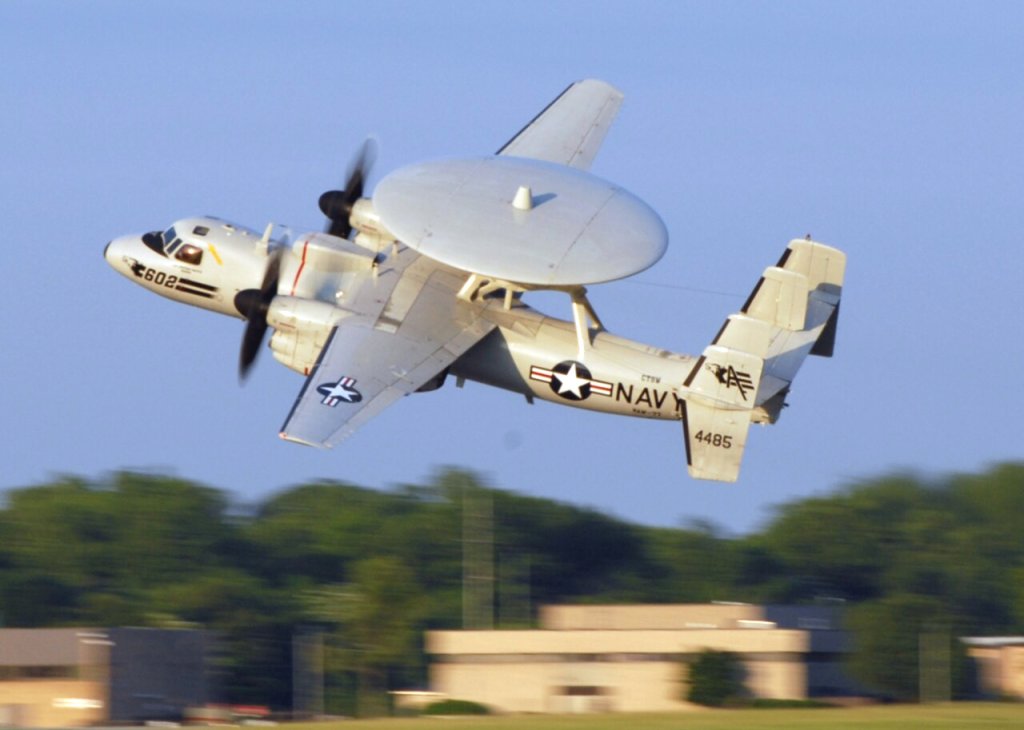
Overall, Hawkeyes could provide an absolutely indispensable surveillance and networking capability around islands where American and allied forces are operating, which could drastically increase those forces’ survivability. It could also fly in support of offensive missions forward from those positions, and be ready to quickly launch to the next locale in order to stay ahead of the enemy’s targeting cycle. One could argue that the E-2 could have as much relevance to the USAF in an island-hopping fight against China as to the Navy.
What in-flight refueling adds to the E-2Ds already impressive array of capabilities could also be of great interest outside of the U.S. military. Egypt, France, Japan, Mexico, and Taiwan already operate E-2 variants. With the exception of France, these countries all fly their Hawkeyes from land bases.
Taiwan, where distributed concepts of operations would be critical in the event of a future invasion from the mainland, could see particular value in the addition of in-flight refueling capabilities to its Hawkeye fleet. The Taiwanese Air Force is currently looking to upgrade its existing E-2s and acquire more, which might include second-hand examples from the United States and France. With the E-2 still in production, Northrop Grumman continues to market the Hawkeye for export.
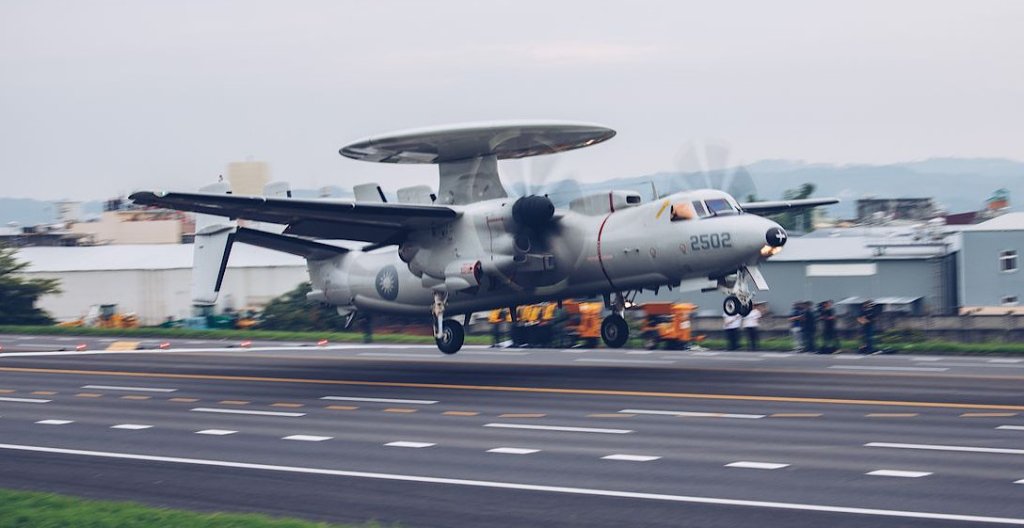
Altogether, the E-2D presents an incredible one-stop-shop platform for monitoring the air and sea and the addition of inflight refueling capability opens up even more operational opportunities. As such, the new video from CENTCOM looks to be a window into future Advanced Hawkeye operations in that region and elsewhere around the world.
Contact the author: joe@twz.com
